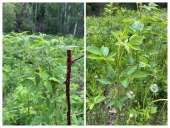
 5
5




 5
5




we are here to learn
 7
7




 9
9




"Also, just as you want men to do to you, do the same way to them" (Luke 6:31)
 11
11




Visit Redhawk's soil series: https://permies.com/wiki/redhawk-soil
How permies.com works: https://permies.com/wiki/34193/permies-works-links-threads
 7
7




Invasive plants are Earth's way of insisting we notice her medicines. Stephen Herrod Buhner
Everyone learns what works by learning what doesn't work. Stephen Herrod Buhner

 8
8




paul wheaton wrote:
I wouldn't be surprised if we all started with blackberries.
How Permies works: https://permies.com/wiki/34193/permies-works-links-threads
My projects on Skye: The tree field, Growing and landracing, perennial polycultures, "Don't dream it - be it! "
 8
8




"The only thing...more expensive than education is ignorance."~Ben Franklin. "We can easily forgive a child who is afraid of the dark; the real tragedy of life is when men are afraid of the light." ~ Plato
 6
6




Maybe Life is always like being on a trapeze or a tightrope at the circus...

 10
10




Hans Albert Quistorff, LMT projects on permies Hans Massage Qberry Farm magnet therapy gmail hquistorff
 8
8




Low and slow solutions
 10
10




Education: "the ardent search for truth and its unselfish transmission to youth and to all those learning to think rigorously, so as to act rightly and to serve humanity better." - John Paul II
 10
10






 13
13




gardener, homesteader
 13
13




gardener, homesteader
 6
6




The meaning is the tail of a puppy.
 7
7




Invasive plants are Earth's way of insisting we notice her medicines. Stephen Herrod Buhner
Everyone learns what works by learning what doesn't work. Stephen Herrod Buhner
 11
11




To be is to do …Kant
To do is to be ..Nietzsche
Do be do be do…Sinatra
Scooby dooby do …St. Thomas
 6
6




"The only thing...more expensive than education is ignorance."~Ben Franklin. "We can easily forgive a child who is afraid of the dark; the real tragedy of life is when men are afraid of the light." ~ Plato

 8
8




 7
7




Christopher Weeks wrote:When I was little, my mom told stories of her grandmother harvesting and serving leafy plants from the vacant lots around her Los Angeles home in the '50s. The subtext was to point out how strange my okie great-grandma was, but I found the idea enchanting. I started eating random lawn plants and disliked them all, so I gave up on that. But there was a lot of feral fruit in our neighborhoods if you kept your eyes open, and I always went for that -- citrus, figs, pomegranate, persimmon, grapes, avocados, etc. When we moved to the Midwest, I had to learn entirely different fruits, but there were raspberries, apples, peaches, mulberries, and wild strawberries at least. As an adult the switch that flipped and got me interested in wild greens again was an infestation of garlic mustard. For years it was this pesty plant that I'd pull and compost to get it out of our side-yard path and then I stumbled on something online about it being edible. Once it was edible, and not bad(!), I had a hard time keeping it going because I'd overharvest to make kimchi.







 7
7




Black raspberries were probably my first and still favorite berry. They don't seem to be as common as they once were.
Hans Albert Quistorff, LMT projects on permies Hans Massage Qberry Farm magnet therapy gmail hquistorff

|
I like my tiny ads with a little salt
The new gardening playing cards kickstarter is now live!
https://www.kickstarter.com/projects/paulwheaton/garden-cards
|





